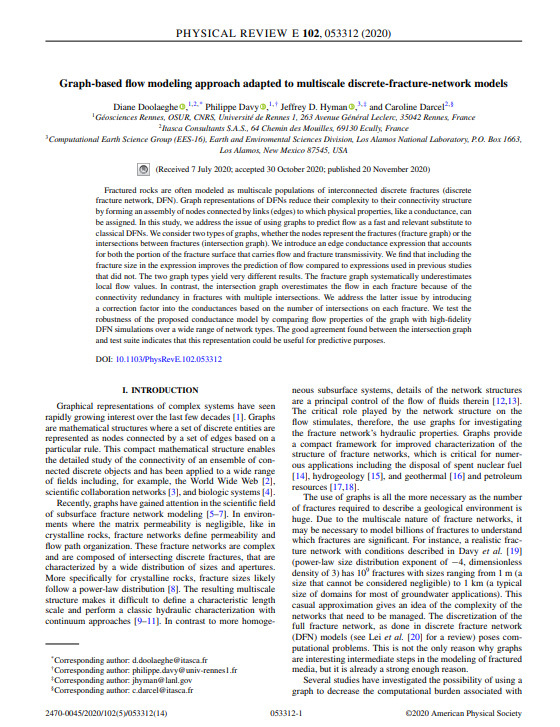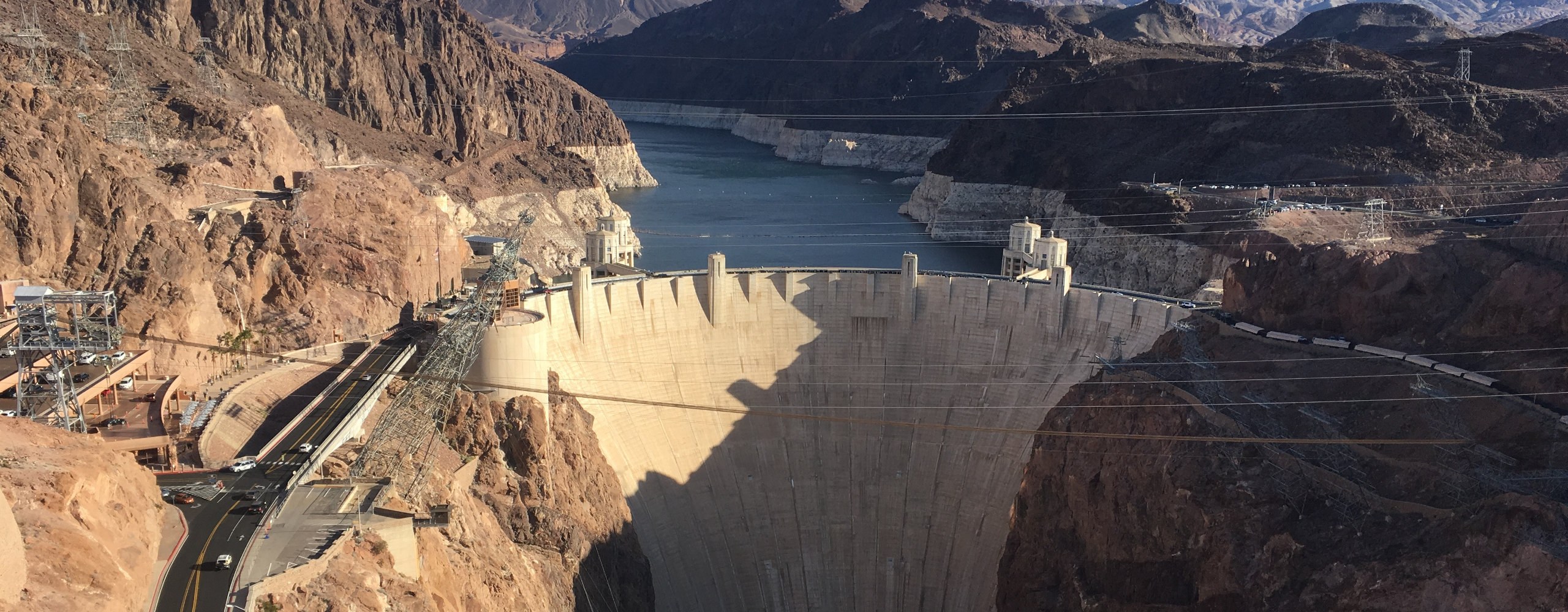Graph-based flow modeling approach adapted to multiscale discrete-fracture-network models
Doolaeghe, D.1,2, Davy, P. , P., Hyman, J. D.3, & Darcel, C.2
1Géosciences Rennes, OSUR, CNRS, Université de Rennes 1, 263 Avenue Général Leclerc, 35042 Rennes, France
2Itasca Consultants S.A.S., 64 Chemin des Mouilles, 69130 Ecully, France
3Computational Earth Science Group (EES-16), Earth and Enviromental Sciences Division, Los Alamos National Laboratory, P.O. Box 1663, Los Alamos, New Mexico 87545, USA
Doolaeghe, D., Davy, P., Hyman, J. D., & Darcel, C. (2020). Graph-based flow modeling approach adapted to multiscale discrete-fracture-network models. Physical review E, 102(5), 053312. doi:10.1103/PhysRevE.102.053312
Abstract
Fractured rocks are often modeled as multiscale populations of interconnected discrete fractures (discrete fracture network, DFN). Graph representations of DFNs reduce their complexity to their connectivity structure by forming an assembly of nodes connected by links (edges) to which physical properties, like a conductance, can be assigned. In this study, we address the issue of using graphs to predict flow as a fast and relevant substitute to classical DFNs. We consider two types of graphs, whether the nodes represent the fractures (fracture graph) or the intersections between fractures (intersection graph). We introduce an edge conductance expression that accounts for both the portion of the fracture surface that carries flow and fracture transmissivity. We find that including the fracture size in the expression improves the prediction of flow compared to expressions used in previous studies that did not. The two graph types yield very different results. The fracture graph systematically underestimates local flow values. In contrast, the intersection graph overestimates the flow in each fracture because of the connectivity redundancy in fractures with multiple intersections. We address the latter issue by introducing a correction factor into the conductances based on the number of intersections on each fracture. We test the robustness of the proposed conductance model by comparing flow properties of the graph with high-fidelity DFN simulations over a wide range of network types. The good agreement found between the intersection graph and test suite indicates that this representation could be useful for predictive purposes.
Keywords: Fracture networks, Graphs, Graph theory, Complexe networks, Flow, Subsurface

